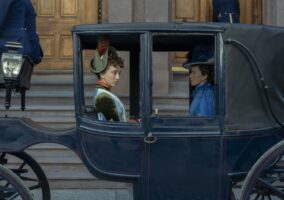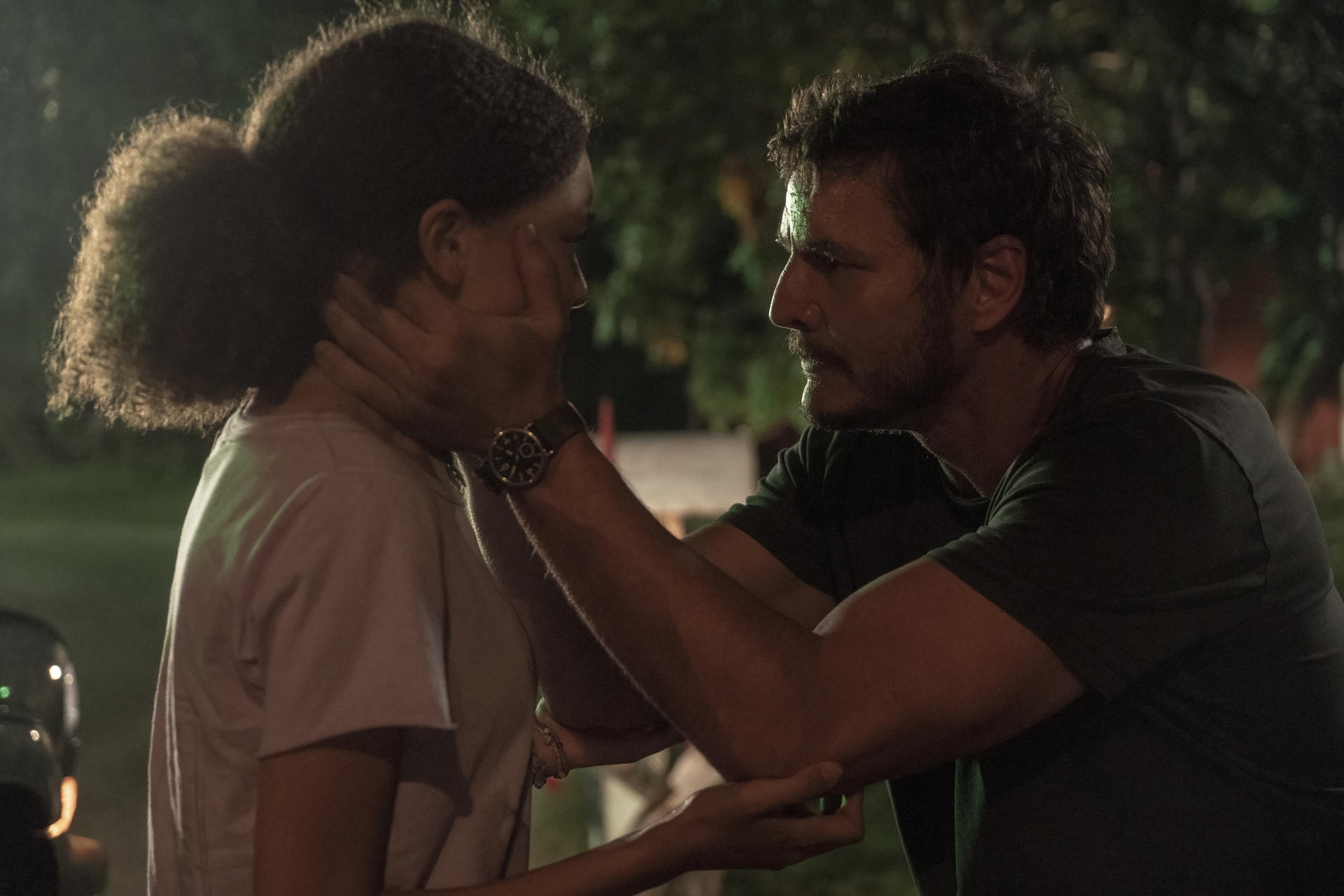
Putting aside the popular game upon which it’s based for a moment, from the perspective of the average viewer (or perhaps more accurately, the viewer who isn’t familiar with the game), the first question regarding The Last of Us is whether or not the world really needs another take on zombies after the shambling creatures dominated quite a bit of our pop culture obsessions over the last decade or so, along with all other manner of post-apocalyptic drama. We could point to the caliber or the casting and acting as justification for it. Literally everyone in it gives a fantastic performance. We could talk about the nuances of the writing or how it immediately posits a more logical and possibly ever-so-slightly optimistic outcome for humanity than The Walking Dead did for most of its run, but then an ardent TWD fan might find these comparisons questionable or even wrong. Inarguably, the one thing that sets The Last of Us apart from most other post-apocalyptic tales on TV is that it looks insanely expensive, from production design to set pieces to special effects, from casting to cinematography, it just reeks of high quality, high-dollar work in the vein of shows like Game of Thrones or House of the Dragon. In other words, it’s the zombie apocalypse, but done HBO style. In the hands of showrunners Craig Mazin, who wrote and produced the Emmy-winning Chernobyl and who did a fantastic job directing this first episode, and Neil Druckmann, who developed and wrote the original game, there’s a sense that they have both the artistry and the faithfulness to the material locked down. We think this high quality level is clear from the opening scene, on the set of a 1968 talk show. The set is beautiful, the costume design and lighting are accurate to the period, and the scene offers a well-referenced pastiche of the 1960s “public intellectual” style of talk show host, like Dick Cavett or David Frost. A short, savvy, culturally literate explanation of the science and origin of the apocalyptic infection that unloads almost all of the explanation you’re going to need going forward. “So if that happens…” ‘We lose.”
Next, we’re in 2003, with Nico Parker lighting up the screen as the focus shifts entirely to her for the next 30 minutes. She’s Sarah, a Texas teenager who wants to make her dad Joel’s (Pedro Pascal) birthday special. There’s a cute rapport between the two of them, which makes for a rock-solid foundation for story and character developments to come. Pedro Pascal is adorable in his interactions with her. We are still more or less in the prologue and it’s taking its time, which is exactly as it should be. Everything in this episode will pay off in some way down the line. The radio mentions “disturbances in Jakarta.” There’s a wonderfully slow and surreal sense of a slow-motion disaster increasing in intensity and getting closer, allowing the viewer to feel Nico Parker’s escalating disorientation and fear as things get more and more bizarre and frightening. There are constant sirens in the background, which she notes with mild confusion, but she doesn’t notice the old woman behind her, twitching and gawping in one of the episode’s creepiest moments, nor does she make much of the dog staring at the old lady in alarm. There aren’t many new or original ways to tell the unfolding of a pandemic-based apocalypse, but showing it from the foggy perspective of a pre-smart phone teenager is a really interesting – and anxiety-inducing – way to go. In some ways, it’s a sort of Spielberg-directing-Jaws approach, in the sense that it’s more unsettling when the show chooses not to show you every detail of what’s unfolding. Because there is so much covered in this first episode, and because some of it is only implied or mentioned obliquely, we’re going to do a more detailed recap than we’d normally do.
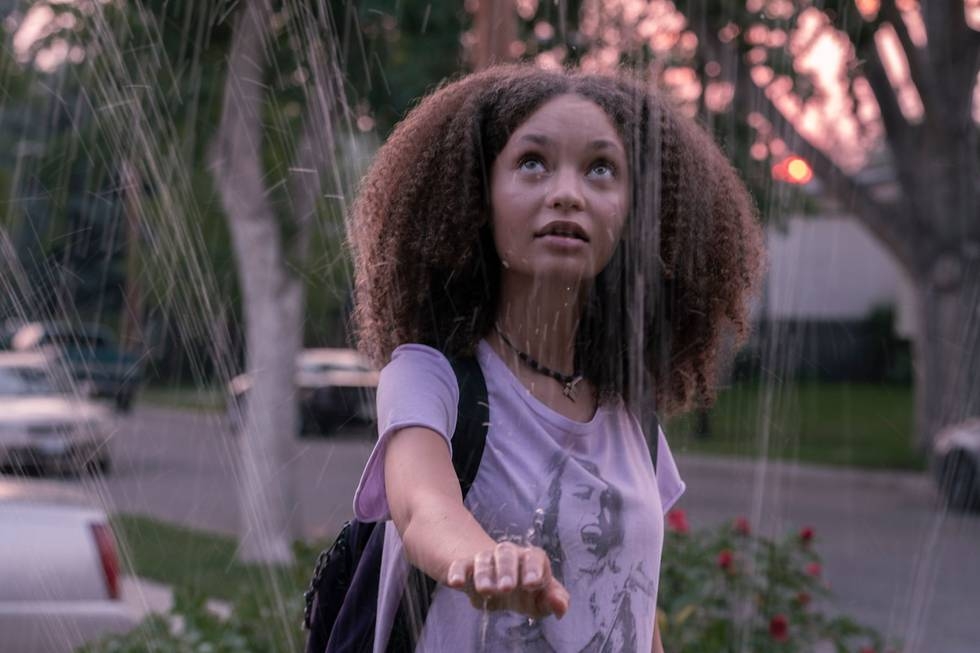
After Joel’s brother Tommy gets locked up after a bar fight and Joel leaves her behind on his birthday night to bail him out, Sarah awakens to an increasingly alarming world, with broadcast television out and helicopters erratically circling the neighborhood. She checks in on her elderly neighbors only to find a slaughterhouse. Parker is great at conveying Sarah’s near inability to process what she’s seeing. Tommy and Joel arrive just in time to put down the now super-charged elderly woman (with a really unsettling bit of mossy fungus growing out of her mouth) and rescue Sarah. We watch the situation escalate further, largely from the backseat of Joel’s truck. Tommy wants to stop for a family stuck on the side of the road, but Joel makes the cold decision to pass them. “They have a kid.” “So do we.” Like a lot of post-apocalyptic stories, this one tends to rest on the idea that those who survive the apocalypse tend to be – or learn quickly how to be – cold if not downright murderous in their survival. They get stuck in heavy traffic and decide to go off-road, where they run into the army. In a massive and extremely impressively staged set piece, Tommy drives through a town being blockaded by cops as residents attempt to flee. It’s a spectacular sequence that pays off in horrible fashion as you only get shaky glimpses of what’s actually happening to all of the screaming people in the street. After a series of planes flee overhead, presumably taking the kinds of evacuees who rate this sort of treatment, one of the planes crash near the town, totals the truck and knocks Sarah out. It’s a situation that never stops going from bad to worse and when Joel is running from an infected while carrying a wounded Sarah, you can just feel both characters’ escalating fear, as well as the growing certainty that they’re not going to make it. Miraculously, they’re saved by a soldier – and then things go from bad to worse again. The soldier receives orders to kill them, Tommy kills the soldiers, and a little over thirty minutes into the episode, Sarah dies, having received an economical and extremely well-directed introduction. Her death isn’t pretty or sentimental or accompanied by a slowed-down instrumental of a 20-year-old pop song. She dies screaming, bleeding and crying. And then, the cut to black and the devastating title card: TWENTY YEARS LATER.
Now we get to what we would consider the other big selling point to justify The Last of Us‘s existence as yet another post-apocalyptic zombie show. The show manages something we think a great deal of those shows fail to do effectively and it pulls it off in the first episode of the series. It establishes a well-explained society that makes a certain amount of sense and feels true to human history as we know it. And it does it smartly, subtly, and with great care to explain each one of the people who live in it. A silent, seeming traumatized child shuffles his way to Boston’s Quarantine Zone. The city is in ruins, but a community exists behind the heavily fortified walls. Again, the show takes its time, willing to spend time on characters who, in some cases, don’t have a part in the story. The little boy is strapped into a wheelchair, tested for infection and executed on the spot as the guard makes him promises about toys and his favorite foods. A grayer and more grizzled Joel is on an organized detail disposing of bodies of the infected. We hope we get to hear the story of how he wound up in Boston from Texas. The little boy is on the pile of bodies and Joel coldly and dispassionately throws his body on the fire. This world is brutal. An agency known as FEDRA is in charge and keeps the order through a heavy military oppression. We get introduced to a well-established society that operates more or less on a 19th century standard of living crossed with 20th century fascism. The QZ is akin to a frontier town, but also a work camp. We see scenes of work crews painting buildings and open air markets selling things like shoe laces in exchange for ration cards while FEDRA soldiers publicly execute invaders and escapees. People can send messages to other parts of the country through radio operators, who work ship shod operations but are clearly in high demand. There’s a system in place here. It’s exploitive, fascistic, and brutal, but it is a system that seemingly allows pockets of humanity to exist and organize. Joel’s doing his part in that system by working as a smuggler and dealing opiods to FEDRA guards for information and connections. There’s mention of the pills coming from Atlanta, which would imply that some form of the CDC and/or the pharmaceutical industry may still be in existence. Along with the existence of FEDRA, this indicates that there is some form of centralized government at work, even if most of America is seemingly lost to the ravages of the infection.
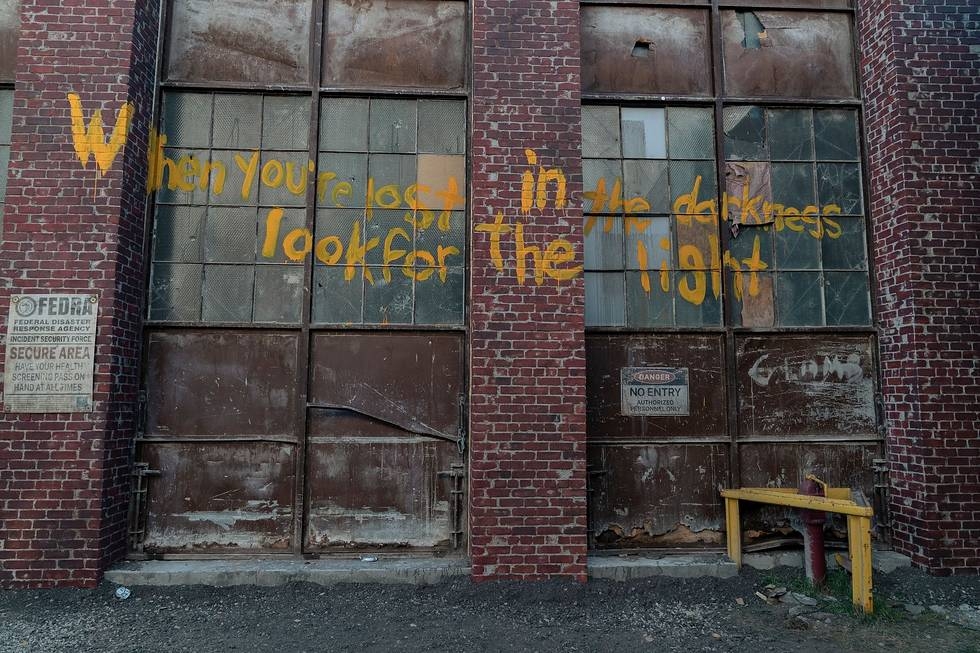
Joel is trying to secure a truck and battery in order to find his brother, whose status we learn about in bits and pieces. We meet Joel’s partner Tess (Anna Torv, who is great, as always) who’s being held captive by a guy who took her money in exchange for a truck battery he sold to someone else. She manipulates him into agreeing to let her go, assuring him that her “old man” does what she tells him to do and that she won’t let him hurt him. To be honest, this sequence was probably trying to deliver a bit too much information at once and we had to rewatch it a few times to understand the setup, the issues, and the players. She eventually gets caught between FEDRA troops and a group of rebels called the Fireflies, who are evidently responsible for all of the “LOOK TO THE LIGHT” graffiti. When Joel sees Tess’s injuries, she immediately moves to calm him down and appears to be extremely adept at manipulating him, in the way only a long-term partner can. She’s as hardened as he is and she gears him up to go out and find their misplaced truck battery so they can go find Tommy. It’s a whole lot of backstory but it’s being filled in in the most economical and captivating ways, making great use of its stars’ already established personae (Pedro Pascal: grizzled with a heart, Bella Ramsey: a baby badass, Anna Torv, a cool, smart badass) to let the viewers fill in the blanks. Tess gets information about where their battery might be and they make plans to go through the subway tunnels and up through some passageways. It’s clear that they’re both extremely well-versed in every back alley, tunnel, and hidden route in the QZ. They come across an infected whose body exploded with fungus, which gives the episode a jolt of horror at just the right moment.
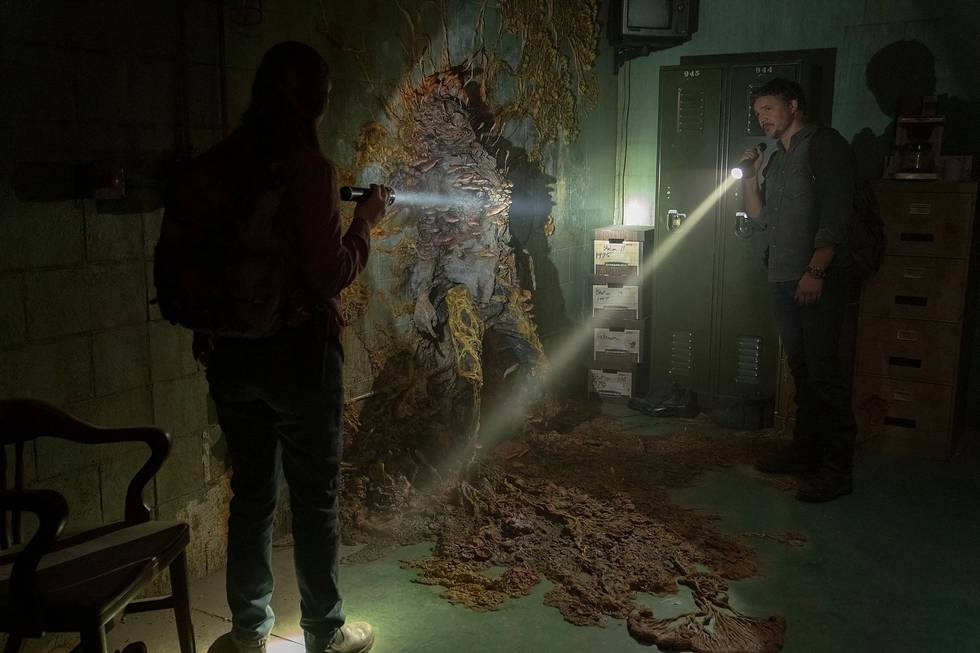
We’re introduced to “Veronica” (the badass herself, Bella Ramsey), a girl chained up in a Firefly cell and forced to go through a series of tests seemingly to prove that she’s not infected. She is rebellious, argumentative and resentful of her situation. Ramsey is, as expected, wonderful in this part and manages to imbue the character with an extremely well-camouflaged vulnerability. We also meet Marlene (Merle Dandridge), a leader of the Fireflies, who’s dealing with some pointed questions from one of her lieutenants about just what the hell they’re doing, putting on all of these strikes that wind up getting their people killed. Marlene reminds her that they’re “in a war against a military dictatorship to restore democracy and freedom” that they’ve been losing for a long time, and then tells her that they’re trying to draw FEDRA troops away from their area so can they take “Veronica” west. She hands the lieutenant a note and assures her that whatever it says is real, which prompts the lieutenant to immediately respond, “Whatever it takes, we’ll get her where she needs to go.” Marlene frees “Veronica,” tells her she knew her mother, reveals her name is “Ellie” and tells her that she won’t let her go “because you have a greater purpose than any of us could have imagined.” It would seem fairly obvious that Ellie is likely to be immune to the infection.
Tess and Joel eventually find themselves in the same building where the Fireflies – and Ellie – are located. The guy who sold their battery is dead on the floor along with a whole bunch of other people. Ellie comes flying out of one of the rooms with her knife and tries to attack Joel, who dispenses with her quickly. Marlene and her lieutenant are wounded. Again, it’s interesting what the show chooses to show and chooses to pass over as less interesting. As if to make a point of how it has removed game play aspects from the story. Tess sneers at Marlene and calls her “the Che Guevara of Boston.” They all clearly have history with each other. Marlene tells them that she needed the battery more than they did because “no offense, but Tommy’s just one man.” Joel accuses her of turning his brother against him. She tells them that they were planning on smuggling Ellie out that night but are no longer in a condition to do so, which means Joel and Tess have to do it. Over everyone’s protests, Tess coolly asks “Who is she?” “To you? She’s cargo.” Marlene states her case and concludes by noting that all she has is Joel and Tess “and I know what you’re both capable of.” “What are they capable of?” Ellie asks, alarmed. The whole scene is really well done, offering moments of tension, comedy, exposition, and character-building while setting up the story going forward. “Y’all talk it through,” Marlene interjects, “but please remember that I’m bleeding out.” Tess decides to take the offer and it seems like she senses something about the situation that Joel doesn’t. She and Marlene share a moment where they subtly nod at each other, recognizing what each woman needs from the other. Joel and Tess lock Ellie in their apartment while they discuss options out in the hallway. Ellie gets the broad strokes of the conversation and thumbs through a copy of Billboard’s Book of Number 1 Hits sitting next to a radio. She finds a note that reads “B/F 60 – Nothing In, 70 – New Stock, 80 – [red x]” She tells Joel that she figured out the smuggling code immediately and eventually notes that songs on the radio from the ’80s mean trouble. He asks her if she’s some big wig’s daughter. “Something like that,” she answers in a way that makes it clear it’s nothing like that. Joel is annoyed and befuddled by her (for very obvious and amazingly well-established reasons) and Tess is direct with her in a way she seems to respect. Again, as with Marlene, Tess appears to be very good at assessing people and situations.
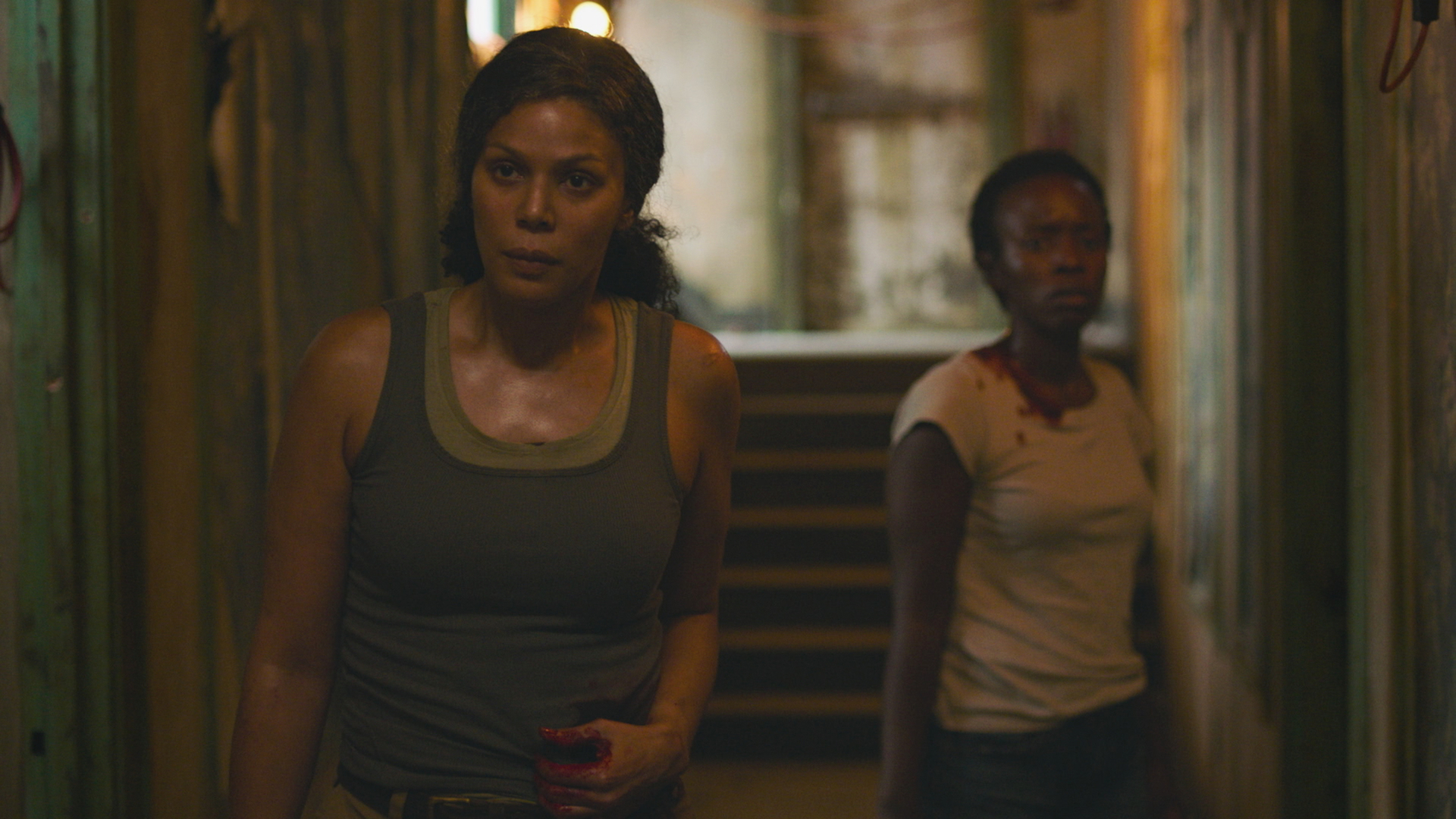
Tess and Joel lead Ellie through a series of tunnels and ruins until she is, to her wonder, outside the QZ for the first time in her life. Unfortunately, things go south almost instantly as they run into the guard Joel was selling pills to earlier. Joel and Tess try to bribe and sweet-talk their way out of the situation, which goes even further south when Ellie, panicking as he tests for infection, buries her knife in his leg. The soldier raises his gun to execute her and Joel, for extremely well-established reasons (in fact, we didn’t need the short flashback), beats the ever-living shit out of the guy. Ellie is horrified but also fascinated by Joel’s violence. Tess freaks out when she learns that Ellie scanned as infected, but she assures them she was bitten three weeks ago and remains uninfected. There’s no time to debate the situation because soldiers are on their way, so the trio head into the city, which is a devastated ruin of toppled skyscrapers. Back at Joel and Tess’s apartment, the radio clicks on and plays Depeche Mode’s 1987 hit “Never Let Me Down Again.” Code broken. Trouble is on the way.
This was, in our opinion, one of the best premiere episodes in quite some time and, having seen half the season so far, we can tell you it’s only going to get better. We’ll have more to say about the show in this week’s podcast.
RUPAUL’S DRAG RACE: All Queens Go to Heaven Next Post:
Brioni Fall 2023 Menswear Collection
Please review our Community Guidelines before posting a comment. Thank you!

